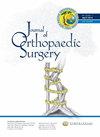糖尿病对膝关节骨性关节炎患者体力活动的影响:一项横断面研究。
IF 1.6
4区 医学
Q3 ORTHOPEDICS
引用次数: 0
摘要
目的:膝关节骨性关节炎(OA)可能与糖尿病(DM)共病,运动是治疗这两种疾病的推荐生活方式。本研究调查了伴有或不伴有糖尿病的膝OA患者体力活动强度的差异,并评估体力活动是否与膝OA患者存在糖尿病有关。方法共183例中重度膝关节OA患者(平均年龄74.9±6.4岁)接受了膝关节功能评估(即膝关节屈伸活动范围、膝关节伸肌力量和膝关节疼痛)、定时起-走(TUG)测试和使用加速度计测量身体活动。比较合并和不合并糖尿病的膝关节OA患者的体力活动强度,评估体力活动(包括膝关节功能和TUG测试时间)与糖尿病之间的关系。结果两组(伴或不伴DM)膝关节OA严重程度和年龄无显著差异。与没有糖尿病的膝OA患者相比,合并糖尿病的膝OA患者的平均每日步数显著降低(p < 0.001),进行低强度体力活动(LPA;p < 0.001)和中高强度体力活动(MVPA;P = 0.006)。在调整了年龄、性别和体重指数后,我们发现较低的平均每日步数和较短的LPA时间与DM显著相关(β = -0.200, p = 0.006;β = -0.216, p = 0.004)和较长的TUG测试时间(β = -0.196, p = 0.014;β = -0.208, p = 0.011)。较短的MVPA时间与较低的对侧膝关节伸展肌力显著相关(β = 0.187, p = 0.032)。结论膝关节OA合并糖尿病患者的体力活动水平明显低于非糖尿病患者,且糖尿病的存在与膝关节OA患者的步数较低、LPA时间较短相关。本文章由计算机程序翻译,如有差异,请以英文原文为准。
Effect of diabetes mellitus on physical activity in patients with knee osteoarthritis: A cross-sectional study.
PURPOSE
Knee osteoarthritis (OA) may be comorbid with diabetes mellitus (DM), and physical activity is a recommended lifestyle strategy for both diseases. The present study investigated the physical activity differences by intensity between knee OA patients with or without DM, and evaluated if physical activity was associated with the presence of DM in knee OA patients.
METHODS
A total of 183 patients (mean age 74.9 ± 6.4 years) with moderate-to-severe knee OA underwent evaluation of knee function (i.e., knee flexion/extension range-of-motion, knee-extension muscle strength, and knee pain), the timed up-and-go (TUG) test, and physical activity measurement using an accelerometer. Physical activity by intensity was compared between knee OA patients with and without DM. The association between physical activity, including knee function and the TUG test time, and DM was assessed.
RESULTS
The 2 groups (with or without DM) did not differ significantly in knee OA severity or age. Compared to knee OA patients without DM, knee OA patients with DM had a significantly lower average daily step count (p < 0.001), and significantly shorter times spent performing light-intensity physical activity (LPA; p < 0.001) and moderate-to-vigorous-intensity physical activity (MVPA; p = 0.006). After adjusting for age, sex, and body mass index, we found that a lower average daily step count and shorter LPA time significantly correlated with DM (β = -0.200, p = 0.006; β = -0.216, p = 0.004, respectively) and a longer TUG test time (β = -0.196, p = 0.014; β = -0.208, p = 0.011, respectively). A shorter MVPA time significantly correlated with lower contralateral knee-extension muscle strength (β = 0.187, p = 0.032).
CONCLUSION
Knee OA patients with DM had significantly lower physical activity levels than those without DM. Furthermore, the presence of DM correlated with a lower step count and a shorter LPA time in knee OA patients.
求助全文
通过发布文献求助,成功后即可免费获取论文全文。
去求助
来源期刊

Journal of Orthopaedic Surgery
ORTHOPEDICS-SURGERY
CiteScore
3.10
自引率
0.00%
发文量
91
审稿时长
13 weeks
期刊介绍:
Journal of Orthopaedic Surgery is an open access peer-reviewed journal publishing original reviews and research articles on all aspects of orthopaedic surgery. It is the official journal of the Asia Pacific Orthopaedic Association.
The journal welcomes and will publish materials of a diverse nature, from basic science research to clinical trials and surgical techniques. The journal encourages contributions from all parts of the world, but special emphasis is given to research of particular relevance to the Asia Pacific region.
 求助内容:
求助内容: 应助结果提醒方式:
应助结果提醒方式:


